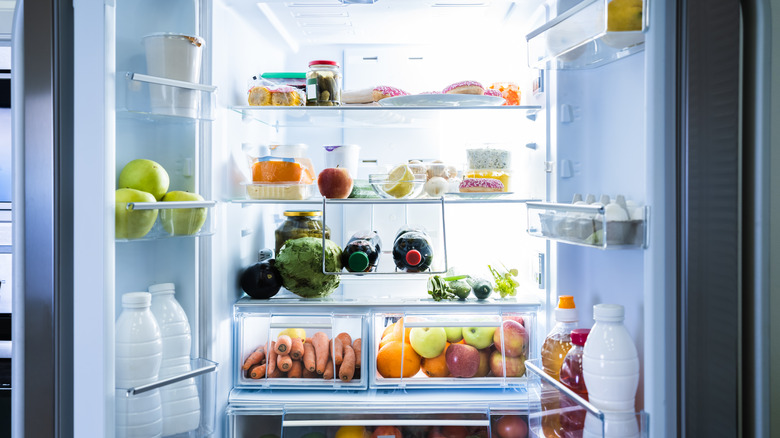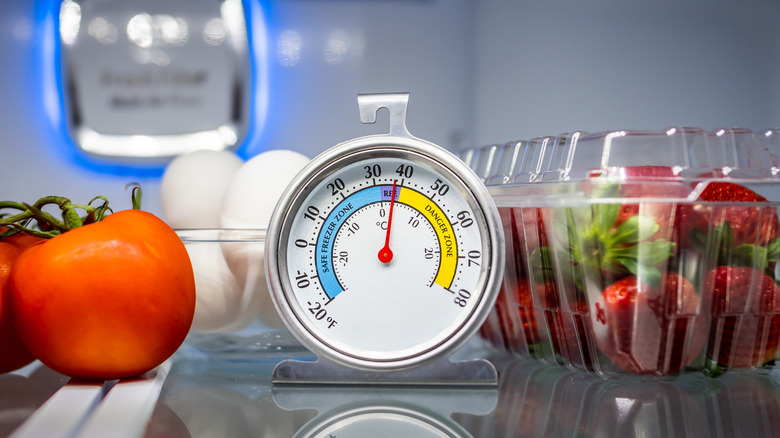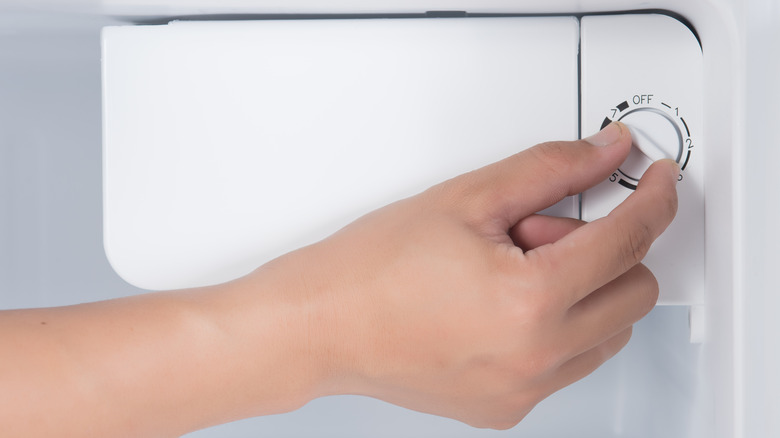What Temperature Your Fridge Should Actually Be Set To
Ever opened a bag of newly purchased leafy greens to find a wilted mess or tasted milk that soured before its expiration date? No, you don't just have bad luck, there might be a misadjusted fridge temperature to blame. The dial in your fridge that you probably set and forget has a big impact on the longevity of your food's storage. Just because your food is cold to the touch doesn't mean your fridge is set to the correct temperature.
40 degrees Fahrenheit or below is the safe zone for your fridge, based on guidance from the FDA. This temperature is safe because it's low enough to prevent bacterial growth, but safe doesn't always mean optimal. For maximum freshness and minimal spoilage, Consumer Reports recommends 37 degrees Fahrenheit. But there's more to the story than fridge temperature numbers — understanding why these temperatures matter and how to keep your fridge running effectively can also be a lifesaver.
What's the risk of a fridge over 40 degrees Fahrenheit?
Setting your fridge too warm is like sending out an open invitation for bacteria to come in and party. These microorganisms aren't picky — they've been known to grow under the harshest conditions, but they especially love hanging out in the temperature danger zone of 40-140 degrees Fahrenheit, which, according to the USDA, allows some bacteria to double in number in just 20 minutes.
Bacteria are a natural and plentiful part of the environment (and you), so they inevitably find their way into food. Bacteria found in food fall into two categories — spoilage bacteria and pathogenic bacteria. Spoilage bacteria can grow under proper refrigeration if food is left too long. Although the bacteria may not cause illness, you'll usually notice them due to the unpleasant odor, appearance, or taste in the food. Pathogenic bacteria (including the infamous E. coli, Listeria, and Salmonella) grow in the temperature danger zone and are usually undetectable until they make you sick.
Since many foodborne illnesses feel like the flu, many people don't realize they have them unless the illness is severe. This issue is bigger than a few upset stomachs. According to the USDA, over 3,000 deaths and 48 million yearly reports of illness can be attributed to pathogenic bacteria in food. People with weakened immune systems, pregnant people, babies, and young children are especially vulnerable to foodborne illnesses.
Tips for keeping your fridge cool and safe
There are steps you can take to give yourself peace of mind when it comes to your fridge, starting with its temperature settings. Even if your fridge has a fancy digital readout or precise controls, they may not be accurate, per Consumer Reports. You can double-check them using a separate appliance thermometer. Place it in your fridge for at least a few minutes and check different spots in your fridge, like the door shelves, which tend to be warmer. In addition to temperature checks, inspect your fridge's seals regularly to make sure they're not leaking precious cool air.
Food storage is another area to be aware of. Let hot foods cool before you pop them into the fridge. Hot foods can temporarily bump up your fridge's internal temperature, making it more welcoming to harmful bacteria. Smaller portions cool faster, so it can be helpful to portion your food into individual-sized containers instead of one big one. Keep in mind that you shouldn't cool foods at room temperature for too long either — under two hours is the guideline from the USDA. And one more thing — try not to stand with the fridge door open, pondering your snack choices. Every second counts in keeping your fridge consistently cool and your food safe and fresh.


